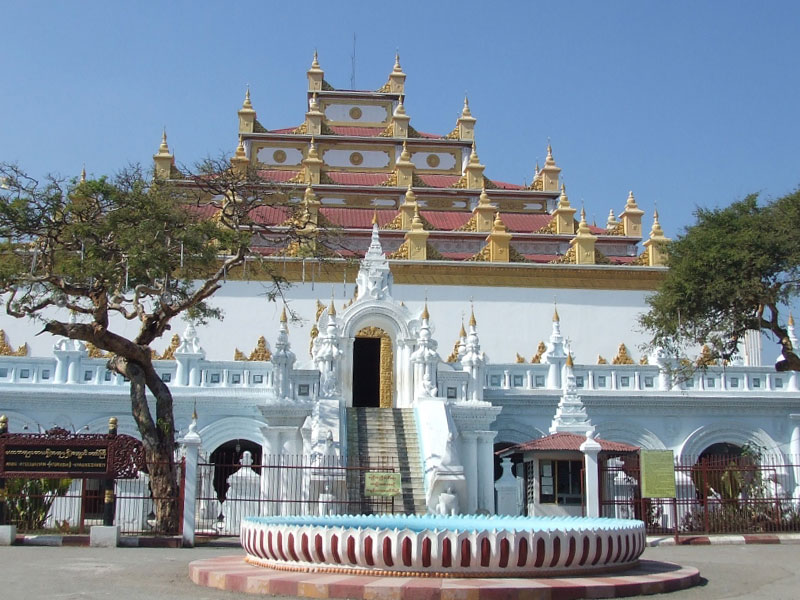
MANDALAY : Mandalay was the last capital of the third Myanmar Empire. It is located 668 km north from Yangon. Mandalay's value lies in that it is a repository of late Myanmar history. Mandalay embodies all the elements of Myanmar's ancient educational, social and cultural system. Mandalay is the home and guardian of the best traditions of Myanmar music and dance .The Mandalayans preserves the proper spoken language of Myanmar. Symbols of religion are richer in Mandalay than in any of the living Myanmar city. It is the principal centre for studies of Buddhist literature. The other tourist attractions are Mandalay Hill, Mya-nan-san-kyaw Golden Palace, the old city walls and the moat; Mahamuni Image of Buddha, which is the most revered and sacred site of Mandalay; Kyauk-taw-gyi Buddha, white Marble huge seated image of the Buddha carved from a single block of stone; Kuthodaw Pagoda with the entire Buddhist scriptures inscribed on 729 marble slabs, known as the "World's Biggest Book"; Shwenandaw Kyaung (Golden Palace Monastery), a superb example of a traditional Myanmar wooden monastery.
One account states that during the reign of King Mindon, steamers began to come up to INNWA (AVA) and AMARAPURA. Since both towns were on the bank of the AYEYARWADDY (IRRAWADDY) RIVER, it would have been possible for the Europeans to bring artillery pieces up-river aboard the trading ships and to shell the then capital of AMARAPURA. King Mindon therefore decided that the capital should be moved some distance from the river, beyond the range of enemy fire. This must have been the original reason of founding MANDALAY though there were some other reasons.
